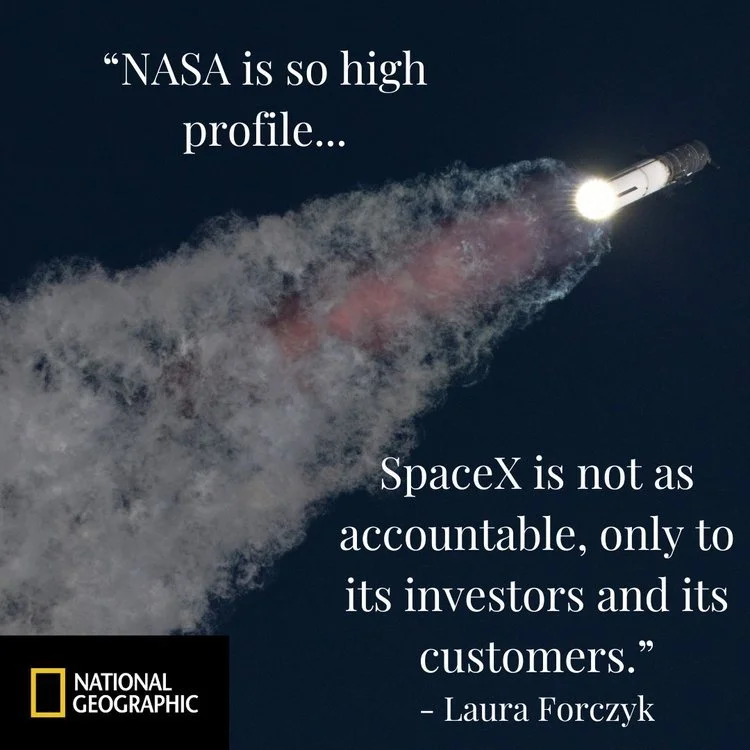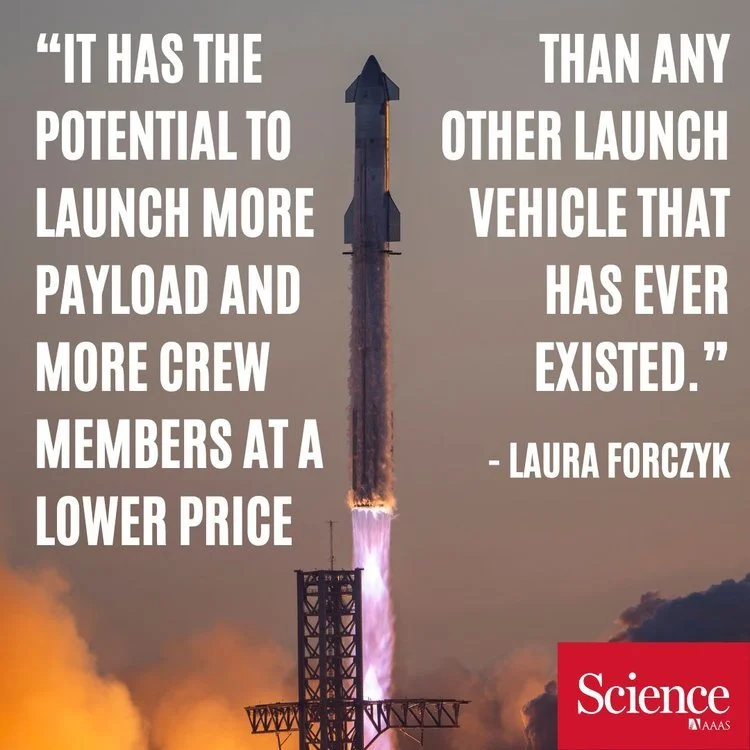GPS... on the Moon?
Want space insights like these in your inbox? Subscribe for weekly analysis.
What an exciting morning!
Like so many of you, I was glued to my screen Saturday morning to watch SpaceX attempt to launch its Starship to orbit. Although it didn’t reach all its goals (nor did I expect it to), significant progress was made.
What happens now?
SpaceX will evaluate and hopefully fix what failed.
SpaceX should get a quicker turn-around for its next FAA license to try again.
SpaceX will keep going until Starship reaches orbit, successfully, again and again. A lot is riding on this rocket (pun unintended). Perseverance is required.
NASA is counting on this rocket to send astronauts back to the surface of the Moon. The scientific community is dreaming about what kinds of missions it could fly with increased design simplicity and asset redundancy. The Department of Defense has expressed interest in this rocket for its own purposes. And SpaceX itself plans to launch even more of its improved Starlink satellites into LEO with Starship.
When we dream big and execute on that dream, we can change the world. Best of luck to SpaceX.
All the best,
Laura Forczyk, Executive Director
PNT on the Moon
GPS is indispensable in the US and in many places around the world. Modern society relies on position, navigation, and timing (PNT) satellites.
What about the Moon?
With increased activity in cislunar space and on the lunar surface, governments and companies are developing PNT concepts for further exploration outside of Earth’s orbit.
Government Initiatives
NASA and ESA have teamed up to develop LunaNet, an architecture framework of standards for lunar communication, PNT, and auxiliary services.
The first mission under LunaNet is Lunar GNSS Receiver Experiment (LuGRE), a joint mission between NASA and the Italian Space Agency (ASI). It’s set to launch on Firefly Aerospace’s Blue Ghost Mission 1 in 2024.
LuGRE will collect GPS and Galileo measurements in cislunar space, in lunar orbit, and on the lunar surface. It will conduct onboard and ground-based navigation experiments using the collected data.
Moonlight is an ESA effort to boost terrestrial GNSS signals to use on the Moon.
The first satellite, Lunar Pathfinder, is being built by Surrey Satellite Technology. It will include NaviMoon developed by Space PNT.
Lunar Pathfinder is scheduled to launch 2026 on Firefly's Blue Ghost Mission 2 (NASA’s contribution to the mission).
NASA’s Lunar Communications Relay and Navigation Systems (LCRNS) is a planned lunar satellite constellation for navigation and communication services.
JAXA’s Lunar Navigation Satellite System (LNSS) for communication, positioning, navigation, and timing will use radio and optical communication links between the Moon surface user, LNSS satellites, and Earth.
Commercial Initiatives
Advanced Space’s Cislunar Autonomous Positioning System (CAPS) flew on its CAPSTONE mission in 2022. It’s a peer-to-peer navigation technology, primarily for spacecraft, but can also be used for lunar surface operations.
Lockheed Martin created subsidiary Crescent Space Services which is developing Parsec, a cislunar communications and navigation network. The launch of the first 2 nodes of the smallsat lunar constellation is scheduled for 2025 on a rideshare mission.
Aerospace Corporation’s Inverted PNT (iPNT) concept is designed to broadcast signals from Earth ground stations to spacecraft in cislunar space.
Masten Space Systems was collaborating with Leidos on a shared navigation network which offloads PNT beacons from a spacecraft into a dedicated sensor array on the Moon. Astrobotic Technology is continuing this effort.
Xplore received a US Air Force contract to continue developing their positioning, navigation and timing (PNT) concept for cislunar space.
Astralytical Analysis
Lunar infrastructure will ramp up significantly over the next decade. This includes PNT, communications, power, roads and landing pads, and buildings.
But the vast majority of such projects with be government-led and government-funded. Purely commercial infrastructure needs will come in time, but will not be the primary driver in the near-term.
Can we assist your growth in the space industry? Contact us to discuss your needs and goals.
Astralytical Insights
Uncertainty Continues to Cloud NASA’s Budget Prospects Amid Speakership Shuffle
By Patrick Chase
To say it has been an interesting few months in domestic American politics would be a colossal understatement. Parsing the impact recent chaos will have on NASA and the American space sector is a far more difficult task.
The Mars Sample Return mission has divided the House and Senate, but Congress has managed to advance other important space policy bills.
Astralytical in the News
Progress in Starship test launch, but ship and booster explode
"It was a fantastic partial success," space scientist Laura Forczyk told AFP. "It surpassed my expectations."
Forczyk, the space scientist, said that SpaceX achieved "more progress than they did back in April" and she expected the company to get cleared by aviation authorities for another attempt more rapidly than before, adding, "It's going to be a quicker turnout."
Second SpaceX megarocket launch ends with another explosion. What happens next?
“NASA is so high profile when it comes to its reputation and who they’re held accountable to,” says Laura Seward Forczyk, founder of the space consulting company Astralytical. “They have Congress. SpaceX is not as accountable, only to its investors and its customers.”
Starship, SpaceX’s transformational mega-rocket, makes it to space
“It has the potential to launch more payload and more crew members at a lower price than any other launch vehicle that has ever existed,” says Laura Forczyk, executive director of the space-industry consulting firm Astralytical.
Despite Musk’s erratic behavior, Forczyk predicts NASA’s relationship with SpaceX and Starship will remain steady. “Just [as] with the Russians after the invasion of Ukraine, it’s business as usual,” Forczyk says. “NASA does not want to be pulled into controversies.”
Astralytical Weekly Analysis will not publish next week due to Thanksgiving. If you’re in the US, enjoy your holiday!
Thank you for being part of the Astralytical community! Contact us to discuss how we can help you grow your business in space.





